A J Lozano
A comparison of the duration and quality of recovery from isoflurane, sevoflurane and desflurane anaesthesia in dogs undergoing magnetic resonance imaging
Lozano, A J; Brodbelt, D C; Borer, K E; Armitage-Chan, E; Clarke, K W; Alibhai, H I K
Authors
D C Brodbelt
K E Borer
E Armitage-Chan
K W Clarke
H I K Alibhai
Abstract
To compare the recovery after anaesthesia with isoflurane, sevoflurane and desflurane in dogs undergoing magnetic resonance imaging (MRI) of the brain. Prospective, randomized clinical trial. Thirty-eight dogs weighing 23.7 +/- 12.6 kg. Following pre-medication with meperidine, 3 mg kg(-1) administered intramuscularly, anaesthesia was induced intravenously with propofol (mean dose 4.26 +/- 1.3 mg kg(-1)), the trachea was intubated, and an inhalational anaesthetic agent was administered in oxygen. The dogs were randomly allocated to one of three groups: group I (n = 13) received isoflurane, group S (n = 12) received sevoflurane and group D (n = 13) received desflurane. Parameters recorded included cardiopulmonary data, body temperature, end-tidal anaesthetic concentration, duration of anaesthesia, and recovery times and quality. Qualitative data were compared using chi-squared and Fisher's exact tests and quantitative data with anova and Kruskal-Wallis test. Post-hoc comparisons for quantitative data were undertaken with the Mann-Whitney U-test. The duration of anaesthesia [mean and standard deviation (SD)] in group I was: 105.3 (27.48) minutes, group S: 120.67 (19.4) minutes, and group D: 113.69 (26.68) minutes (p = 0.32). Times to extubation [group I: 8 minutes, (interquartile range 6-9.5), group S: 7 minutes (IQR 5-7), group D: 5 minutes (IQR 3.5-7), p = 0.017] and to sternal recumbency [group I: 11 minutes (IQR 9.5-13.5), group S: 9.5 minutes (IQR 7.25-11.75), group D: 7 minutes (range 3.5-11.5), p = 0.048] were significantly different, as were times to standing. One dog, following sevoflurane, had an unacceptable quality of recovery, but most other recoveries were calm, with no significant difference between groups. All three agents appeared suitable for use. Dogs' tracheas were extubated and the dogs recovered to sternal recumbency most rapidly after desflurane. This may be advantageous for animals with some neurological diseases and for day case procedures.
Citation
Lozano, A. J., Brodbelt, D. C., Borer, K. E., Armitage-Chan, E., Clarke, K. W., & Alibhai, H. I. K. A comparison of the duration and quality of recovery from isoflurane, sevoflurane and desflurane anaesthesia in dogs undergoing magnetic resonance imaging. Veterinary Anaesthesia and Analgesia, 36(3), 220-229. https://doi.org/10.1111/j.1467-2995.2009.00451.x
| Journal Article Type | Article |
|---|---|
| Deposit Date | Nov 11, 2014 |
| Journal | Veterinary Anaesthesia and Analgesia |
| Print ISSN | 1467-2987 |
| Electronic ISSN | 1467-2995 |
| Publisher | Wiley |
| Volume | 36 |
| Issue | 3 |
| Pages | 220-229 |
| DOI | https://doi.org/10.1111/j.1467-2995.2009.00451.x |
| Public URL | https://rvc-repository.worktribe.com/output/1426485 |
You might also like
Conformation-associated health in pet rabbits in the UK: A VetCompass cohort study
(2024)
Journal Article
Life tables of annual life expectancy and risk factors for mortality in cats in the UK
(2024)
Journal Article
The epidemiology of tick infestation in dog breeds in the UK
(2024)
Journal Article
Downloadable Citations
About RVC Repository
Administrator e-mail: publicationsrepos@rvc.ac.uk
This application uses the following open-source libraries:
SheetJS Community Edition
Apache License Version 2.0 (http://www.apache.org/licenses/)
PDF.js
Apache License Version 2.0 (http://www.apache.org/licenses/)
Font Awesome
SIL OFL 1.1 (http://scripts.sil.org/OFL)
MIT License (http://opensource.org/licenses/mit-license.html)
CC BY 3.0 ( http://creativecommons.org/licenses/by/3.0/)
Powered by Worktribe © 2025
Advanced Search
